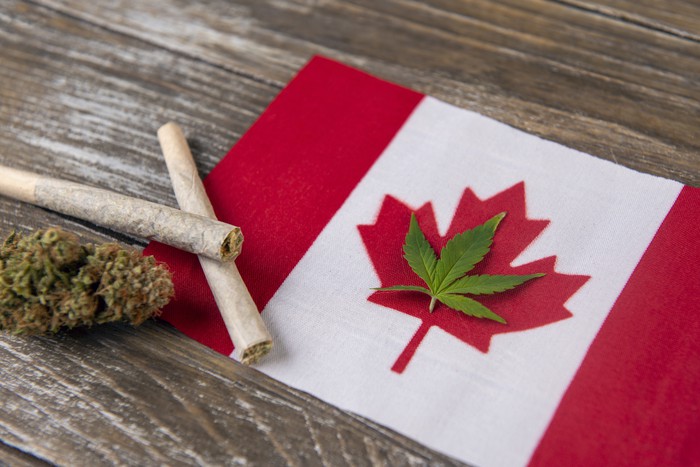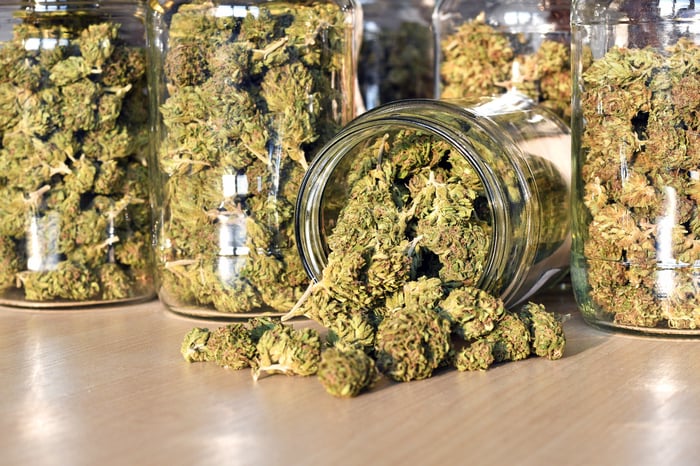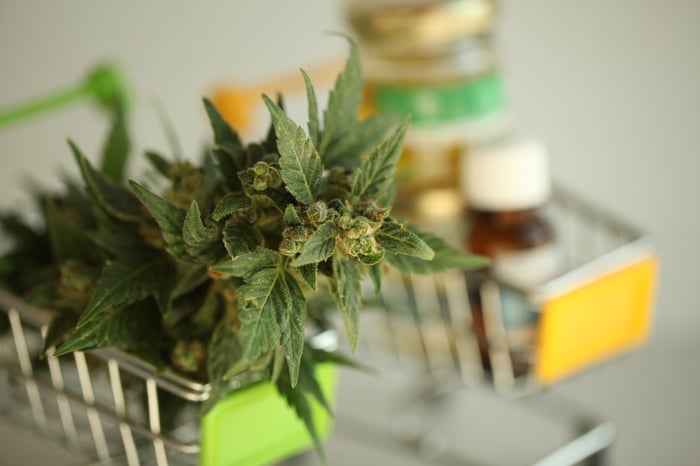You are here
Home 🌿 Recreational Marijuana News 🌿 Here's how much marijuana Canadians bought in the first year of Legalization 🌿Here's how much marijuana Canadians bought in the first year of Legalization

This has been a big week for the marijuana industry. On Thursday, Oct. 17, regulations concerning cannabis derivatives -- e.g., edibles, vapes, concentrates, topicals, and infused beverages -- went into effect. Although consumers won't officially see these products on dispensary store shelves until mid-December, it officially marks phase two of the marijuana legalization process in Canada.
This milestone event also comes on the one-year anniversary of the start of recreational marijuana sales in Canada. Retail stores opened their doors to adult-use sales on Oct. 17, 2018, with dried flower, cannabis oils, and sublingual sprays all fair game.
The big question is: How much marijuana did Canadians buy over the past year?
Here's what we know from Statistics Canada, so far
The honest answer is that we don't know yet, at least concretely. Statistics Canada, the agency that reports retail sales data for our neighbor to the north, usually releases this data around seven to eight weeks after a month has ended. That means we're still waiting on cannabis store sales data from August, and it'll be a while before we're privy to data from September and October.
However, Yours Truly has been keeping tabs on reported cannabis store sales data since the green flag waved a year ago, through July. Here's what things looked like through the first 9.5 months; data is reported in Canadian dollars (CA$).
- October: CA$53.68 million
- November: CA$53.73 million
- December: CA$57.34 million
- January: CA$54.88 million
- February: CA$51.66 million
- March: CA$60.94 million
- April: CA$74.58 million
- May: CA$85.81 million
- June: CA$91.46 million
- July: CA$104.5 million
All told, that's CA$688.58 million in sales (about $524.2 million U.S.) since the ball dropped on legalized cannabis in Canada. But, as noted, 2.5 months of data isn't included in this figure, albeit monthly sales in legalized stores have improved for five consecutive months.
Nevertheless, this didn't stop one company from estimating how much cannabis Canadians bought in the first year following legalization.

A new analysis takes a stab at first-year sales and consumption data
Using existing data, Cannabis Benchmarks, a provider of financial data for the North American cannabis industry, has surmised that Canadians spent CA$1.1 billion ($837.5 million) on legal marijuana in the first full year of legalization. To put this into context, California alone is forecast to generate $3.1 billion in legal sales all by itself in 2019, although the Golden State's population is larger than that of Canada.
Using data provided by Statistics Canada on per-gram prices for legal marijuana during the third quarter of CA$10.23 per gram, Cannabis Benchmarks estimates that approximately 105,000 kilos of cannabis were sold over the trailing 12-month period.
On one hand, that's CA$1.1 billion in sales that cannabis companies didn't have just a few years ago. But, on the other hand, Cannabis Benchmarks' estimate, if accurate, would be a huge disappointment. After all, Canada is a country thought to have peak annual consumption potential of 924,000 kilos per year. If consumers only gobbled up 105,000 kilos over the trailing 12-month period, it means that the legal weed business is only operating/selling at 11.4% of peak efficiency. It's also very worrisome when you consider that the aggregate peak production potential from the 15 largest growers in Canada will easily surpass 3 million kilos per year.
Furthermore, it suggests that black market marijuana is thriving in our neighbor to the north. The latest National Cannabis Survey from Statistics Canada shows that close to 50% of all consumers continue to illegally buy black market cannabis.

If you haven't done so already, lower your expectations for marijuana stocks
While it's a positive that sales have trended in the right direction for five consecutive months, many of the issues plaguing the Canadian pot industry are nowhere near a resolution.
For example, supply issues that have plagued weed sales since day one are now going to be a nuisance for the derivatives launch. Regulatory agency Health Canada simply can't review cultivation and sales license applications fast enough to accommodate growers.
Meanwhile, certain provinces have been notoriously slow to approve retail license. For instance, Ontario, a province with roughly 14.5 million people, has a mere 24 open dispensaries. Without physical stores to buy product, consumers have had little choice but to buy from illicit producers.
Aphria (NYSE:APHA), one of Canada's top growers by peak annual output, is based in Ontario, and witnessed minimal sales growth from cannabis in its most recent quarterly report. At a time when marijuana should be flying off the shelves, Aphria wound up reporting only a CA$2.2 million increase in sequential quarterly cannabis revenue to CA$30.8 million in the fiscal first quarter. Aphria and its peers are unlikely to see a significant uptick in sales until more retail locations are added and nationwide supply issues are deal with.
Aurora Cannabis (NYSE:ACB) and Canopy Growth (NYSE:CGC), as of mid-April, were both expected to produce CA$845 million and CA$781 million in respective fiscal 2020 full-year sales. Today, those 2020 estimates now stand at CA$549 million for Aurora Cannabis and CA$586 million for Canopy Growth. And these estimates may fall even further, with Aurora and Canopy investing heavily in foreign markets, yet not expected to realize any benefits from these investments until demand is met in Canada, which could be a while. Aurora Cannabis and Canopy Growth are easily the best-known cannabis stocks, so to see them struggling so visibly demonstrates the magnitude of the problem at hand for the Canadian pot industry.
The point is that if you haven't already done so, it's time to lower your near-term expectations for pot stocks.
420 Intel is Your Source for Marijuana News
420 Intel Canada is your leading news source for the Canadian cannabis industry. Get the latest updates on Canadian cannabis stocks and developments on how Canada continues to be a major player in the worldwide recreational and medical cannabis industry.
420 Intel Canada is the Canadian Industry news outlet that will keep you updated on how these Canadian developments in recreational and medical marijuana will impact the country and the world. Our commitment is to bring you the most important cannabis news stories from across Canada every day of the week.
Marijuana industry news is a constant endeavor with new developments each day. For marijuana news across the True North, 420 Intel Canada promises to bring you quality, Canadian, cannabis industry news.
You can get 420 Intel news delivered directly to your inbox by signing up for our daily marijuana news, ensuring you’re always kept up to date on the ever-changing cannabis industry. To stay even better informed about marijuana legalization news follow us on Twitter, Facebook and LinkedIn.




